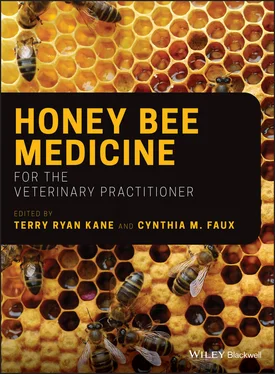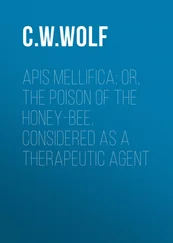Practical application: Unlike other livestock, honey bee queens are polyandrous, resulting in a colony of bees consisting of a mix of patrilines of half‐sisters, each fathered by one of the many drones with which their mother mated. Thus, there will always be genetic differences and diversity, even with colonies headed by sister queens. The performance of each colony as a whole is thus a matter of chance, similar to putting together a sports team of players (each patriline of worker bees) without knowing how well they will perform as a group (the colony). Bottom line: you might advise beekeepers to start in spring with twice as many colonies as they hope to take through the winter, and not waste their time on those that don' t perform well. Some commercial beekeepers (the author included) simply cull any poor performers.

Figure 5.8 A histogram of colony performance (weight gain) of 35 colonies, started with sister queens mated and managed identically in one of the author's yards. Note the normal distribution of performance.
Practical application: On the other hand, many a poorly‐performing colony can completely turn around once it clears itself of disease, or enjoys better nutrition. If honey production is not the beekeeper's main goal, they may find joy in helping a struggling colony to get back on its feet.
Beekeepers often refer to a queen's “age” in years. But biologically, chronology has little to do with it – a queen's “age” is a function of the number of viable spermatozoa remaining in her spermatheca, or more specifically, her ability to fertilize each egg laid in a worker cell (Baer et al. 2016).
Practical application: Thus, in a colony in a commercial operation in California or Florida, supplementally fed for near year‐round broodrearing, a queen may begin to run out of spermatozoa in the late summer of her second year. On the other hand, a queen in a cold‐winter area, in which she rests for five months of the year, may be productive for several seasons.
A colony of bees is theoretically immortal, but not so its queen. In the natural state, with colonies living in tree cavities, the queen is replaced at least once a year (due to swarming). And prior to varroa it was not uncommon for a relatively unmanaged hive to live for many years, also replacing its queen without help from the beekeeper.
Practical application: There are three ways in which a colony can replace its queen, each due to different circumstances:
Supersedure – when the workers build a supersedure cell to smoothly replace a failing queen.
Swarming – in which a colony in a crowded cavity builds swarm cells, and then divides by fission, with roughly half the workers flying off with their mother, leaving behind daughters in those cells to take her place.
Emergency – when workers respond to the sudden loss of a queen by converting a young larva in a worker cell into an emergency queen.
There is much overlap involved in the three methods above; the vet needs to be familiar with each.
A colony normally replaces an aging or failing queen by a process called “supersedure.” The main factors that determine when a queen gets superseded are when she starts to run out of viable sperm with which to fertilize worker eggs, or by colony stress.
Practical application: Bees appear to “blame” their queen if the colony becomes seriously stressed by disease or parasites, which then triggers supersedure.
Worker bees often build “cell cups” on the face of a brood comb ( Figure 5.9), but this does not necessarily mean that they are preparing to supersede or swarm. An “aging” queen will “willingly” lay an egg in a prepared cup, at which point the workers may turn it into a queen cell.
Practical application: The presence of cell cups does not indicate that a colony is about to supersede their queen. Even if supersedure larvae initially get fed, that doesn' t mean that supersedure is inevitable, since the colony will often tear the cells down before emergence. Russian bees are noted for their continual starting of supersedure cells.
A mature supersedure cells looks similar to a peanut stuck to the side of the comb ( Figure 5.10).
Practical application: beekeepers often ask whether they should destroy supersedure cells. I tell them that the bees likely have a better idea of the quality of their queen than they do. I see no reason to remove supersedure cells. 4

Figure 5.9 Preconstructed natural “queen cups.” It is not unusual to see these in a colony. Their presence does not necessarily mean that the queen is about to be replaced. Even when there is an egg or a larva with jelly in a queen cell, they are often destroyed by the bees during that new queen's development.
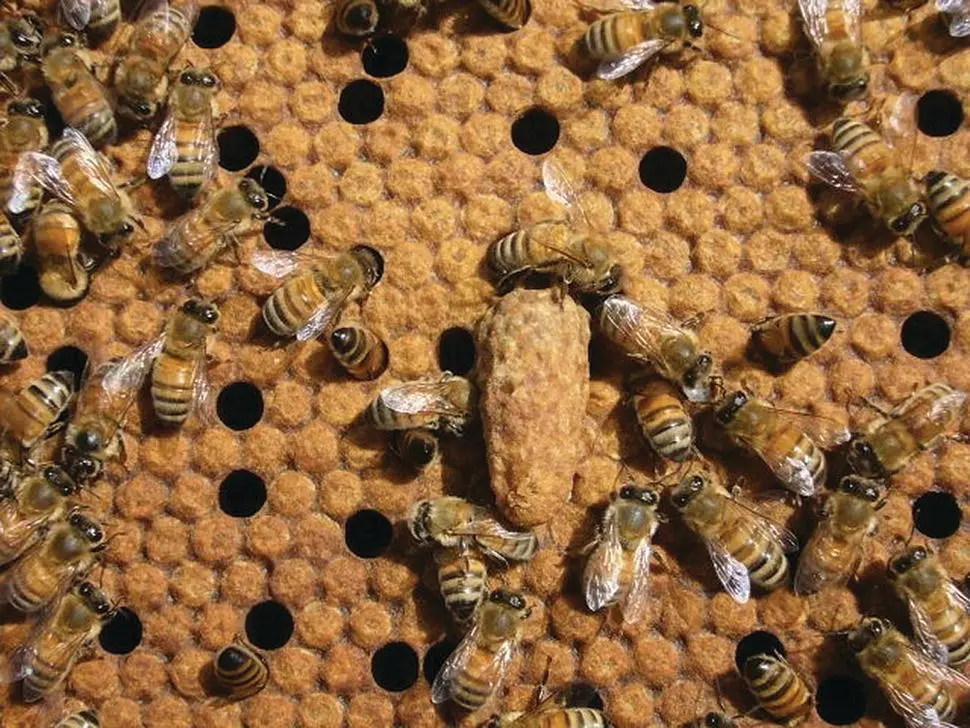
Figure 5.10 A typical supersedure cell. Supersedure cells are generally found singly, as opposed to swarm or emergency cells, of which there are generally several. They are also generally found near the center of the brood area, rather than along the edges, as are swarm cells, or scattered, as are emergency cells.
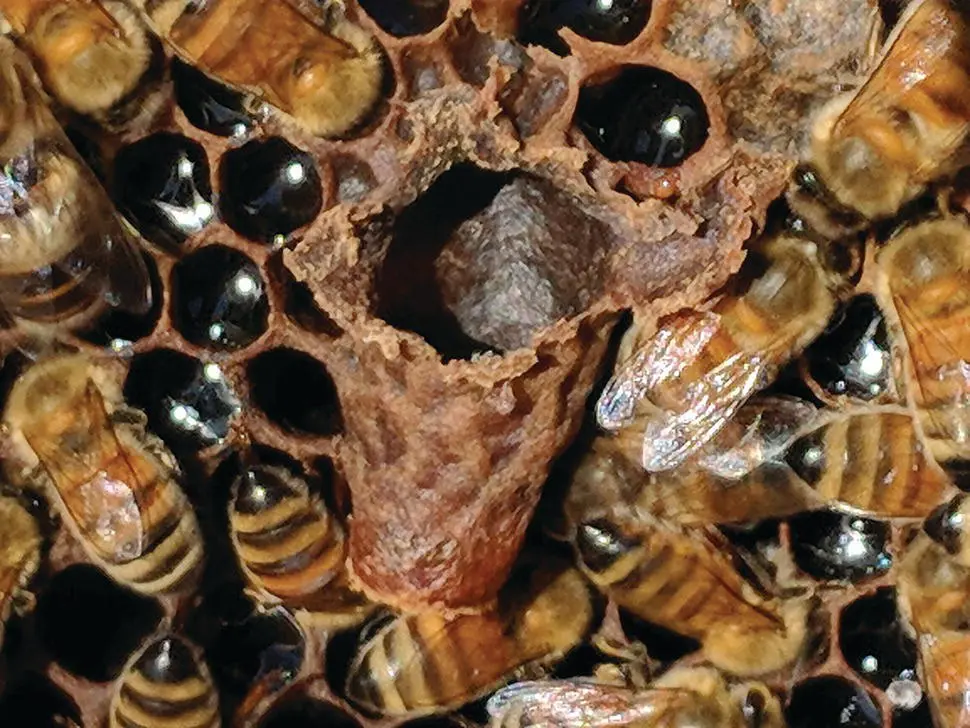
Figure 5.11 A dissected supersedure cell after emergence, showing that the egg had been laid in a preconstructed cell cup (as for a swarm cell), as opposed to the cell being postconstructed from a worker cell (as for an emergency cell). We are not yet clear as to the proportion of supersedure cells that are produced by these two different routes. There is also some evidence that workers may be able to transfer an egg or young larva from a worker cell to a queen cup (Punnett and Winston 1983).
Not all supersedure cells come from prepared cell cups. Some that I have dissected originated from worker cells ( Figure 5.11), so the line between supersedure and emergency cells may be fuzzy.
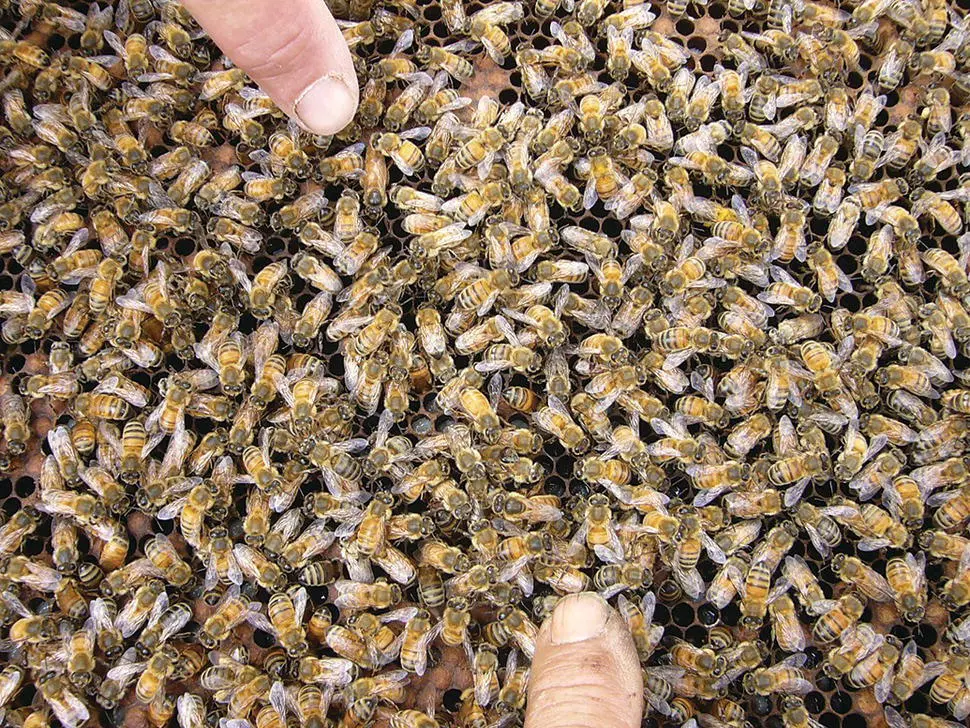
Figure 5.12 Two laying queens on the same comb face (the lower one is a bit above the finger). On the other hand, I occasionally see a failing queen being “balled,” suggesting that her own workers are killing her.
Although sister queens will invariably fight to the death, an emerged daughter queen and her mother often peacefully coexist. 5 It is not uncommon to observe mother and daughter laying eggs side by side for days or weeks, with the mother eventually disappearing from the hive ( Figure 5.12).
Practical application: Although it is generally the case, never assume that there is only a single queen in a hive. The only way to be sure that all queens have been removed is to shake the bees through an excluder “sieve box” (Figures 5.13 and 5.14 ).
Читать дальше
